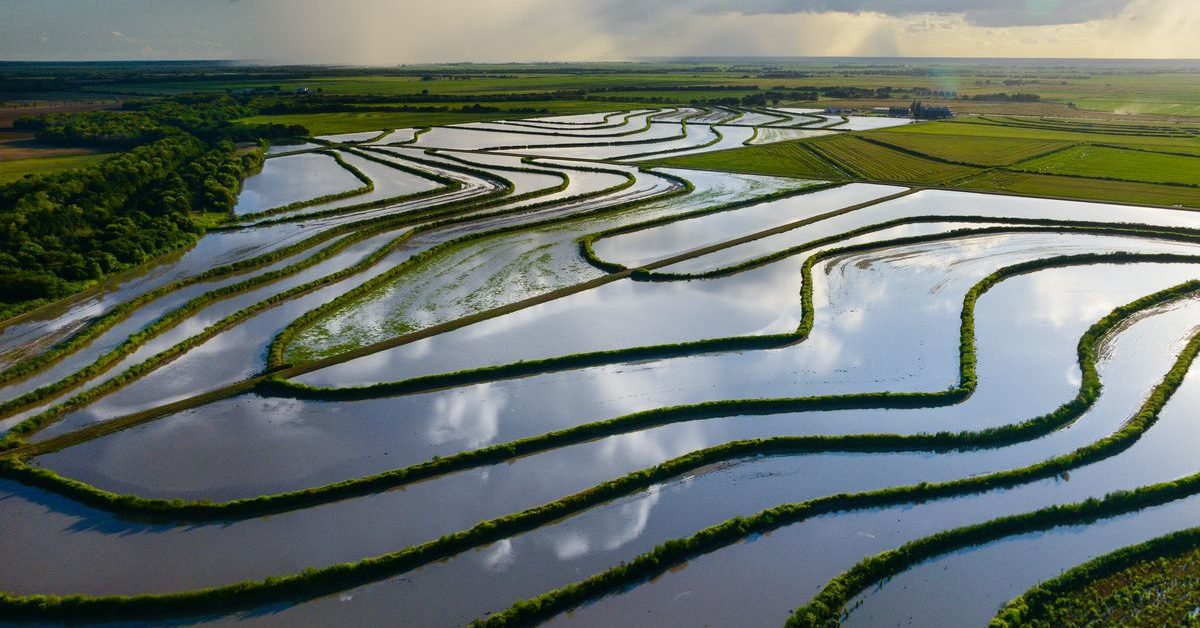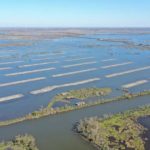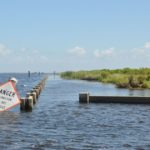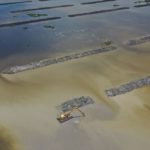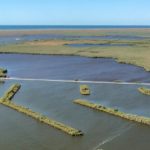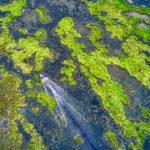Due to a number of factors, including industrialization and urbanization, the United States has lost more than 50% of its wetlands over the last 200 years. The Environmental Protection Agency (EPA) estimates that more than half of our nation’s original wetlands have been drained and converted for other uses since the 17th century.
Even with the current focus on wetland conservation, the United States is still losing roughly 60,000 acres of wetlands per year (as of 2004), according to a report from the Fish and Wildlife Service (FWS). This loss places immense stress on the remaining wetlands and accelerates the decrease in habitat and landscape diversity.
To counter this degradation, a number of laws and regulations have been passed. These laws and regulations aim to conserve and restore wetlands, as well as safeguard the plants and animals that live in and surround the wetlands.
In this article, we’ll discuss the wetland mitigation, restoration, creation, and enhancement process. We’ll also discuss some of the challenges and timelines inherent in these processes.
What is Wetland Mitigation?
Also known as compensatory wetland mitigation, wetland mitigation is the process of replacing lost wetland resources with created or restored wetlands. The ultimate goal is to replace the functions and public benefits of the lost wetlands. Rehabilitation can be accomplished through the restoration or enhancement of manipulated wetlands, the creation of new wetlands, and the enhancement of damaged wetlands.
Though more commonly associated with commercial development, wetland mitigation has very specific applications in landownership and agricultural production. Under the Food Security Act of 1985, landowners who convert wetlands into agricultural land after December 23, 1985, will be ineligible for some USDA benefits until the functions of the converted wetlands have been mitigated or restored.
Landowners who wish to alter wetlands to mitigate or replace the lost functions, values, and acres have the option to restore or enhance manipulated wetlands, enhance degraded wetlands, or create new wetlands.
Mitigation sites can be created on the landowner’s land, on another person’s land, or on land held by a mitigation bank. The owner of the land where the mitigation will occur is responsible for the filing of easement documents, and the final mitigation plans must be approved by the Natural Resources Conservation Service (NRCS).
How Do You Mitigate a Wetland?
Compensatory wetland mitigation requires the replacement of all lost wetland functions, values, and acres. Landowners who wish to convert their wetlands into agricultural land need to develop a mitigation plan that will be approved by the Natural Resources Conservation Service (NRCS). Landowners should seek the help of qualified environmental consultants in order to develop viable wetland mitigation plans.
Once the wetland mitigation plan has been approved, the landowner and their local district conservationist must sign a mitigation agreement to implement the plan. A Warranty Easement Deed is required on the restored wetland acres. This deed is recorded with the local Register of Deeds and is granted to the Commodity Credit Corporation by the NRCS.
As previously mentioned, mitigation sites can be created on the landowner’s land, on another person’s land, or on land held by a mitigation bank. Mitigation banks (which are owned by mitigation bankers) are environmentally damaged sites that have been selected for regeneration. Landowners can purchase credits from mitigation banks to offset the damage incurred by their own wetlands.
If landowners are unsure if their wetlands are subject to the wetland conservation provisions under the Food Security Act of 1985, they should first consult their local NRCS office. The NRCS will certify the wetlands by signing form AD-1026 at the Farm Service Agency (FSA) office. The NRCS will then perform an assessment to determine if the wetlands are subject to the provisions.
Either the approved state authorities or the United States Army Corps of Engineers (USACE) is responsible for determining the correct type and degree of compensatory wetland mitigation that is needed.
There are four main compensatory wetland mitigation strategies: preservation, enhancement, restoration, and creation (PERC).
What is Wetland Restoration?
Wetland restoration is the restoration of the natural characteristics and functions of former or damaged wetlands. This involves restoring the former or damaged wetlands’ chemical, physical, or biological characteristics. Wetland restoration is one of the four main compensatory wetland mitigation strategies, along with preservation, enhancement, and creation.
According to the Environmental Protection Agency (EPA), restoration practices can be subdivided into: re-establishment (i.e. the rebuilding of a former wetland) and rehabilitation (i.e. repairing the functions of a damaged wetland).
Wetland restoration efforts can either be regulatory or voluntary. Regulatory wetland restoration stems from federal, state, tribal, or local laws and regulations. These laws and regulations forbid, condition, or compensate for permitted impacts to existing wetlands.
Voluntary wetland restoration, meanwhile, refers to restorative activities that aren’t required by regulations or statutes. Whether they’re stand-alone efforts or are implemented to augment state or tribal regulatory programs, voluntary wetland restoration helps reduce the rate of environmental degradation and facilitates a gain in natural wetlands.
Why is Wetland Restoration Difficult?
Wetland restoration is difficult because there are numerous physical limitations and ecological issues that need to be taken into consideration during the restoration process. It’s also extremely difficult to restore the exact same functions and values of a former or damaged wetland.
Case in point: There has been a well-documented effort to restore the wetlands along the shoreline of the Salmon River Estuary in Oregon. The area was previously diked, which caused the wetlands to dry up, and the resulting dry land was used for pasture. In 1978, an attempt was made to reverse this process by removing two dikes to allow the former wetlands to re-establish themselves.
After a decade, the resulting wetlands did not resemble the other high marshes along the estuary. In fact, they more closely resembled the wetlands that could be found in lower elevations closer to the estuary.
Even though the wetlands continue to evolve as a result of sediment being trapped and deposited by vegetation, it might take up to 50 years for the restored wetlands to more closely resemble the high marsh wetlands they once were.
Coastal wetland restoration, in particular, comes with its own unique challenges. Chief among them are the knowledge gaps that impede coastal wetland restoration and the insufficient knowledge about site-specific bio-morphological interactions.
How Long Does It Take to Restore Wetlands?
There is no standard answer to this question, as all wetland restoration projects are subject to their own unique challenges, scope, and complexity. Generally, the amount of time it would take for a restored or recreated wetland to resemble the original ecosystem would depend on the wetland type, wetland functions, as well as the target animals and plants.
As previously noted, it is estimated that the restored wetlands along the shoreline of the Salmon River Estuary in Oregon may take up to 50 years to regain their original characteristics. Less ambitious projects, like the restoration of a marsh with a lush stand of marsh vegetation, could be accomplished in as little as three to four years.
The restoration of a red maple swamp could take three decades or more to accomplish, while wetland functions that rely upon the development of mature soils may take up to hundreds or even thousands of years to bear fruit.
The creation and restoration of specific functions and values may also occur at different speeds. The restoration of amphibian habitats, which depend upon the viability of wetland soils, would take longer to accomplish than the recreation of flood storage and flood conveyance.
Since both flood storage and flood conveyance rely upon the manipulation of topography, the process is more straightforward than restoring amphibian habitats.
What is Wetland Creation?
Also known as establishment, wetland creation is the process of developing wetlands and other aquatic environments where one did not previously exist. Wetland creation can be accomplished by manipulating the biological, physical, or chemical characteristics of the development site. It’s also one of the four main compensatory wetland mitigation strategies, along with preservation, enhancement, and restoration.
Successful wetland creation can only occur if the development site possesses conditions that make the process viable. These include potential hydrological, vegetational, and wildlife habitat functions on soils that are conducive to supporting these functions.
How Can Wetlands Be Created?
According to the Natural Resources Conservation Service (NRCS), the purpose, goals, and objectives of the wetland creation process need to be clearly outlined in the wetland creation plan. Other criteria that should be outlined include hydrology, soils, vegetation, as well as fish and wildlife habitat. The established criteria needs to be appropriate to the site and stated objectives.
During the planning process, the hydrology, soils, and vegetative conditions that exist on the site—along with the contributing watershed and adjacent landscape—need to be thoroughly documented.
If the site is suspected to contain hazardous materials, tests should be conducted to identify the appropriate remedial measures. If remedial measures aren’t feasible, the overall project may have to be reconsidered.
Plans and specifications for each site should be recorded using job sheets, specification sheets, and other approved forms of documentation. The plans and specifications for structural features should include, at a minimum, quantities, a plan view, and profiles and cross-sections that delineate the line, location, and grade for stakeout and checkout.
An operation and maintenance plan should also be prepared for sites with structural features. This plan should include the maintenance actions that should be carried out to ensure that constructed features remain operational and functional throughout the lifespan of the project.
Upon completion, the established wetland should meet the appropriate wetland criteria and provide the functions that were outlined in the project objectives.
What is Wetland Enhancement?
Wetland enhancement refers to the restorative activities that are conducted within existing wetlands to improve one or more functions. The overall objective is to optimize a specific part of the ecosystem, such as water quality, biodiversity, and flood water management.
As previously mentioned, wetland enhancement is one of the four main compensatory wetland mitigation strategies, along with preservation, restoration, and creation.
Other functions that can be optimized include hydric soil functions (e.g. changing the soil’s hydrodynamic properties), the vegetation (e.g. removing undesirable vegetation), as well as enhancing animal and plant habitats.
